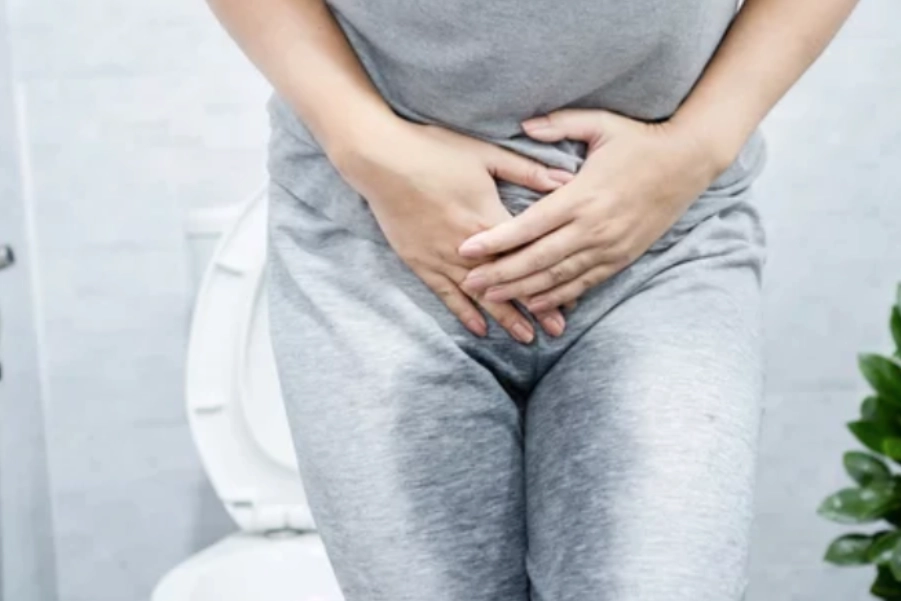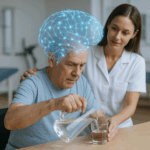Protocol for Stress Urinary Incontinence (SUI)
1. Overview of Condition:
Stress urinary incontinence (SUI) is a prevalent condition, particularly in women, marked by involuntary urine leakage during physical activities that increase intra-abdominal pressure, such as coughing, sneezing, laughing, or exercise. The condition is usually caused by weakness or dysfunction of the pelvic floor muscles, which play a crucial role in bladder control. SUI can severely affect a person’s quality of life, contributing to social, psychological, and physical challenges.
Symptoms:
- Involuntary urine leakage during physical exertion (e.g., coughing, sneezing, laughing, exercising).
- Increased urgency or frequency of urination, though typically no loss of urine when not engaging in stress-inducing activities.
- Feelings of heaviness or pressure in the pelvic region.
Probable Deficits:
- Weakness of the pelvic floor muscles, particularly the pubococcygeus muscle.
- Reduced endurance and coordination of the pelvic floor muscles.
- Impaired support of the bladder and urethra due to weakened pelvic floor musculature.
- Poor proprioceptive awareness of pelvic floor muscle contraction and relaxation.
2. Assessment and Evaluation of Impairment:
Clinical Tools for Assessment:
- Patient History: A thorough review of the patient’s symptoms, including the frequency of incontinence episodes, triggers, and any contributing factors such as pregnancy, childbirth, or heavy lifting.
- Urinary Incontinence Questionnaire (e.g., ICIQ-UI): A validated questionnaire to assess the severity of symptoms and their impact on daily life.
- Pelvic Floor Muscle Assessment:
- Manual Muscle Testing (MMT): Assessment of pelvic floor muscle strength, endurance, and coordination through vaginal or rectal examination.
- Perineometer or EMG Biofeedback: To measure the strength and function of the pelvic floor muscles, providing real-time feedback to guide training and ensure correct activation.
- Pad Test/Bladder Diary: A pad test can be performed to measure the volume of urine loss under stress, and a bladder diary helps track the frequency and triggers of leakage.
- Urodynamics Testing (if necessary): To evaluate bladder function and rule out other causes of incontinence, especially in cases with more complex symptoms.
3. Goal Setting:
The primary goal is to reduce or eliminate urinary incontinence during physical activities that increase intra-abdominal pressure. Secondary goals include improving pelvic floor muscle strength, endurance, and coordination, as well as improving quality of life and reducing the psychological burden associated with SUI.
Specific Goals:
- Primary: Achieve complete or near-complete resolution of incontinence episodes during physical exertion.
- Secondary:
- Improve pelvic floor muscle strength and endurance.
- Restore pelvic floor muscle coordination and awareness.
- Educate the patient on bladder habits and lifestyle modifications to reduce symptoms.
4. Recommended Interventions:
Electrotherapy:
- Pelvic Floor Electrical Stimulation (PFES): Electrical stimulation can be used to strengthen weakened pelvic floor muscles by delivering low-frequency electrical currents that evoke muscle contractions.
- Protocol: 10-20 minutes, 2–3 times per week, gradually decreasing frequency as muscle strength improves.
- Evidence: A meta-analysis by Zijlstra et al. (2022) supports the effectiveness of PFES in improving pelvic floor muscle strength and reducing symptoms of SUI.
Biofeedback Therapy:
- EMG Biofeedback: Provides visual and auditory feedback to the patient regarding pelvic floor muscle activation, helping improve awareness and control of pelvic floor contractions.
- Protocol: Sessions lasting 10-15 minutes, 2-3 times per week, with progressive increases in intensity and duration as muscle control improves.
- Evidence: Studies (e.g., Bo et al., 2023) show that EMG biofeedback improves muscle function and reduces incontinence episodes.
Pelvic Floor Muscle Training (PFMT):
- Kegel Exercises: Progressive pelvic floor muscle strengthening exercises aimed at improving the tone and endurance of the pelvic floor muscles.
- Protocol: Instruct the patient to perform 3 sets of 10-15 contractions per day, ensuring full relaxation between contractions. The exercises should be progressed by increasing the intensity (e.g., longer holds) and frequency as tolerated.
- Evidence: Multiple studies (e.g., Neels et al., 2024) confirm that pelvic floor muscle training is highly effective in reducing symptoms of SUI, particularly when combined with other therapeutic modalities.
Behavioral Modifications:
- Bladder Training: Timed voiding and urge suppression techniques can be used to improve bladder habits and reduce frequency and urgency.
- Protocol: Encourage the patient to gradually increase the time between voids and avoid “just-in-case” voiding.
- Evidence: Evidence (e.g., Kegel et al., 2023) supports the use of bladder training techniques as part of a comprehensive treatment plan for SUI.
Core and Postural Training:
- Core Stability Exercises: Strengthening the deep abdominal and pelvic floor muscles to improve overall support to the bladder and reduce intra-abdominal pressure.
- Protocol: Exercises such as pelvic tilts, abdominal bracing, and bridging should be incorporated into the rehabilitation plan to enhance pelvic floor function.
- Evidence: Core stability training has been shown to improve pelvic floor muscle performance and reduce SUI symptoms (Schultz et al., 2023).
Breathing Techniques:
- Diaphragmatic Breathing: To reduce pressure on the pelvic floor and promote relaxation during physical activities.
- Protocol: Instruct the patient in deep, diaphragmatic breathing techniques during pelvic floor contractions to avoid excessive intra-abdominal pressure.
- Evidence: Research (Bo et al., 2024) suggests that proper breathing patterns can alleviate symptoms of pelvic floor dysfunction and support muscle relaxation.
5. Precautions and Special Considerations:
- During Pregnancy: Avoid using electrical stimulation in the first trimester or during conditions such as placenta previa. Pelvic floor exercises should be modified based on the patient’s trimester and comfort level.
- Post-Surgical Considerations: If the patient has undergone pelvic surgery (e.g., prolapse repair), wait until tissue healing is complete before initiating PFMT or electrical stimulation.
- Pain or Discomfort: Discontinue any modality that causes significant discomfort or pain. Ensure that the pelvic floor muscles are not overworked or strained.
6. Reassessment, Criteria for Progression/Change in Care Plan:
- Reevaluation of Symptoms: Use symptom questionnaires (e.g., ICIQ-UI) to assess improvement in incontinence severity. Monitor the number of leakage episodes and their impact on daily life.
- Functional Assessment: Reassess pelvic floor muscle strength and endurance through manual testing, EMG biofeedback, and pressure profile assessments.
Criteria for Progression:
- Reduction in incontinence episodes during physical activities.
- Improvement in pelvic floor muscle strength and endurance.
- Better coordination and awareness of pelvic floor muscle function.
Progression Plan:
- Once significant improvement is noted, transition the patient to a maintenance program involving home exercises, as well as continued pelvic floor awareness training and periodic follow-up for reassessment.
References:
- Zijlstra, H., et al. (2022). Electrical Stimulation in the Treatment of Stress Urinary Incontinence: A Systematic Review. Neurourology and Urodynamics.
- Bo, K., et al. (2023). The Efficacy of Biofeedback in Pelvic Floor Rehabilitation: A Review of the Literature. International Urogynecology Journal.
- Neels, H., et al. (2024). Pelvic Floor Muscle Training for the Management of Stress Urinary Incontinence: A Meta-analysis. Journal of Physiotherapy.
- Schultz, L. A., et al. (2023). Core Stability and Pelvic Floor Function in Women with Stress Urinary Incontinence. Journal of Women’s Health Physiotherapy.
- Kegel, P., et al. (2023). Bladder Training and Behavioral Modifications in Stress Urinary Incontinence. Journal of Urology.
Disclaimer: Treatment options must be selected carefully, based on individual patient needs, preferences, and available resources. The recommendations made in this protocol are for informational purposes only and should be tailored to the patient’s unique clinical presentation. Always consult with a qualified healthcare provider before initiating any treatment.






